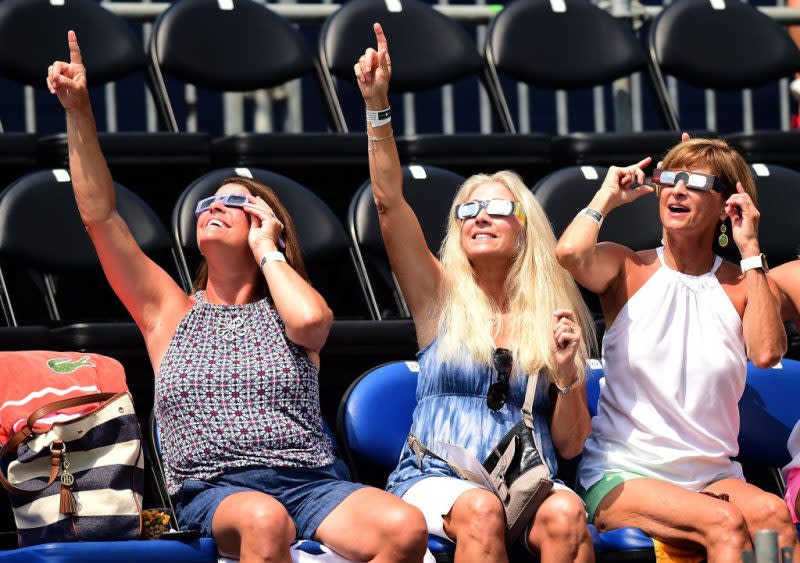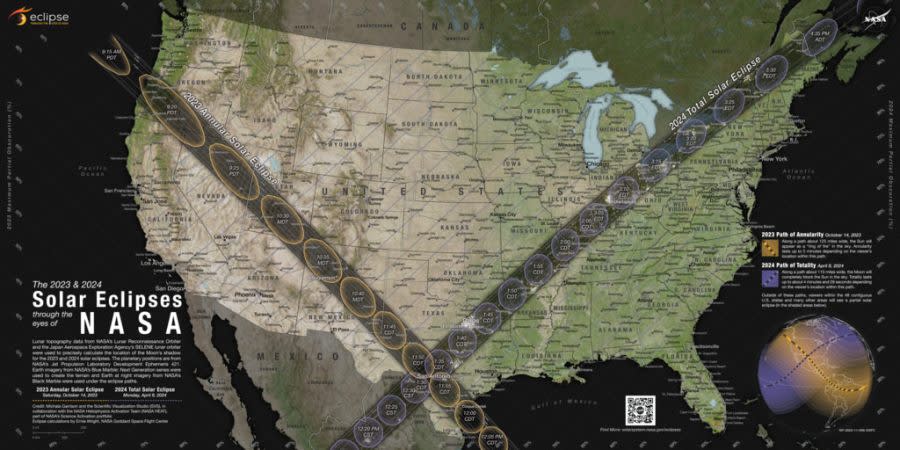How to watch the 2023 solar eclipse safely – and what you should never do

ALBUQUERQUE, N.M. (KRQE) – An annular solar eclipse, also known as the “ring of fire” solar eclipse, will be visible on Oct. 14, 2023, with the best views to be found in the western half of the U.S.
Nexstar’s KRQE spoke with a NASA scientist and a University of New Mexico ophthalmology professor about the steps people need to take to view the annular solar eclipse safely and prevent eye damage.
How to view an annular solar eclipse safely
The Task Lead for NASA’s Heliophysics Education Activation Team, Carolyn Ng, said one thing you should never do is to look directly at an annular solar eclipse without proper eye protection. “You need the eye protection. So either through a solar telescope, a special filter in front of a telescope, or the famous glasses, the paper glasses, or the viewer that is specially made,” said Ng.
Where to get eclipse glasses, filters and viewers
If you search for eclipse glasses or solar viewers online, hundreds of sellers will be displayed. To make sure you are buying legitimate and safe products, look to see if they comply with the ISO 12312-2 international safety standard for filters for direct viewing of the sun.
Dr. Robert Avery, professor of ophthalmology at the Department of Ophthalmology and Visual Sciences at the UNM School of Medicine, said to be wary of people selling counterfeit eclipse glasses or solar viewers. He referred people to the American Astronomical Society‘s list of legitimate suppliers of safe solar filters and viewers.
The list includes online retailers and brick-and-mortar stores. You may want to call ahead before going to find eclipse glasses at your local store.
Make your own eclipse viewers
There are ways to create your own devices to view an eclipse. Avery suggested people make a pinhole projector that allows “the sun’s image to be indirectly projected onto a piece of cardboard or, or paper so that you can view the eclipse indirectly without staring directly at the sun,” he said. NASA’s video tutorial on how to make a pinhole projector can be found by clicking here.
In Albuquerque, the New Mexico Museum of Natural History & Science will host a workshop that gives guests an opportunity to make their own eclipse masks. The workshop will take place on Sept. 30.
How to view an eclipse through telescopes, binoculars or camera
Avery said solar filters are needed to safely view the eclipse through telescopes, binoculars or cameras including phones. American Astronomical Society also listed where to buy filters.
Can I use a welding filter?
The American Astronomical Society said the only welding filters that are safe for direct viewing of the sun with your eyes are those of Shade 12 or higher.
What not to do when trying to view an annular solar eclipse
NASA‘s website said regular sunglasses or most wielding shields are not suitable for viewing the sun. People are also asked not to look at the sun through a camera lens, telescope, binoculars, or any other optical device while wearing eclipse glasses or using a handheld solar viewer.
If using a pinhole projector to see the eclipse, do not look at the sun through the pinhole.
The American Astronomical Society said in addition to making sure your eclipse shades or handheld viewers are in good condition. If the filters are torn, scratched, punctured, or are coming loose from their cardboard or plastic frame discard them.
Signs of eye damage and where to seek care
Staring at the sun can damage light detectors inside the eye’s retina, according to Avery. This can cause a blind spot in a person’s central vision. “So the condition is called solar retinopathy. and the condition generally starts a few hours after the intense exposure to the sun,” Avery said.
Avery explained that the condition is not painful and people may not know they damaged their eye right away. “It can occur after a few seconds and certainly with prolonged gazing, it increases the risk of not only some damage that may resolve after a few months but permanent damage that never goes away,” he said.
An eye doctor can diagnose solar retinopathy but there is limited treatment for it. “The only treatment is observation and time to see if the retina will recover and oftentimes it does after several months but sometimes not,” Avery said.
For the latest news, weather, sports, and streaming video, head to WesternSlopeNow.com.


